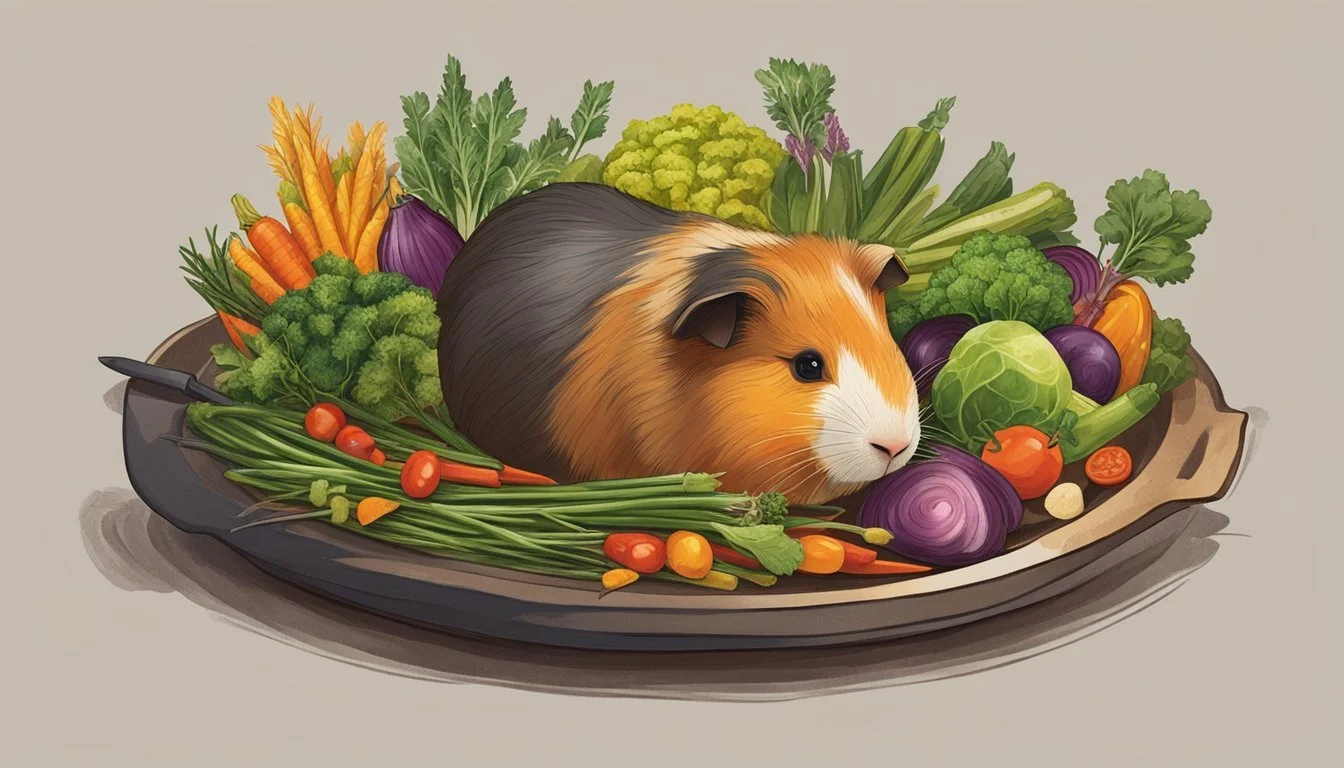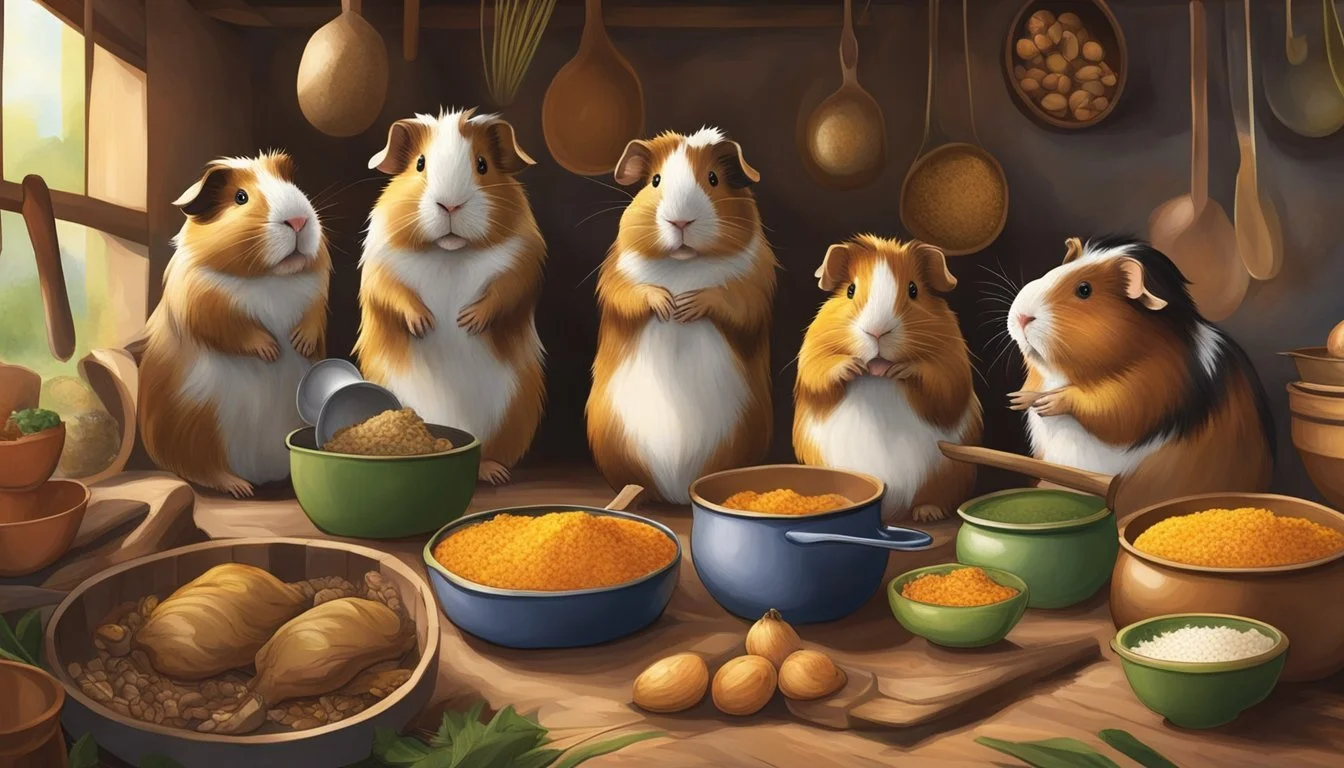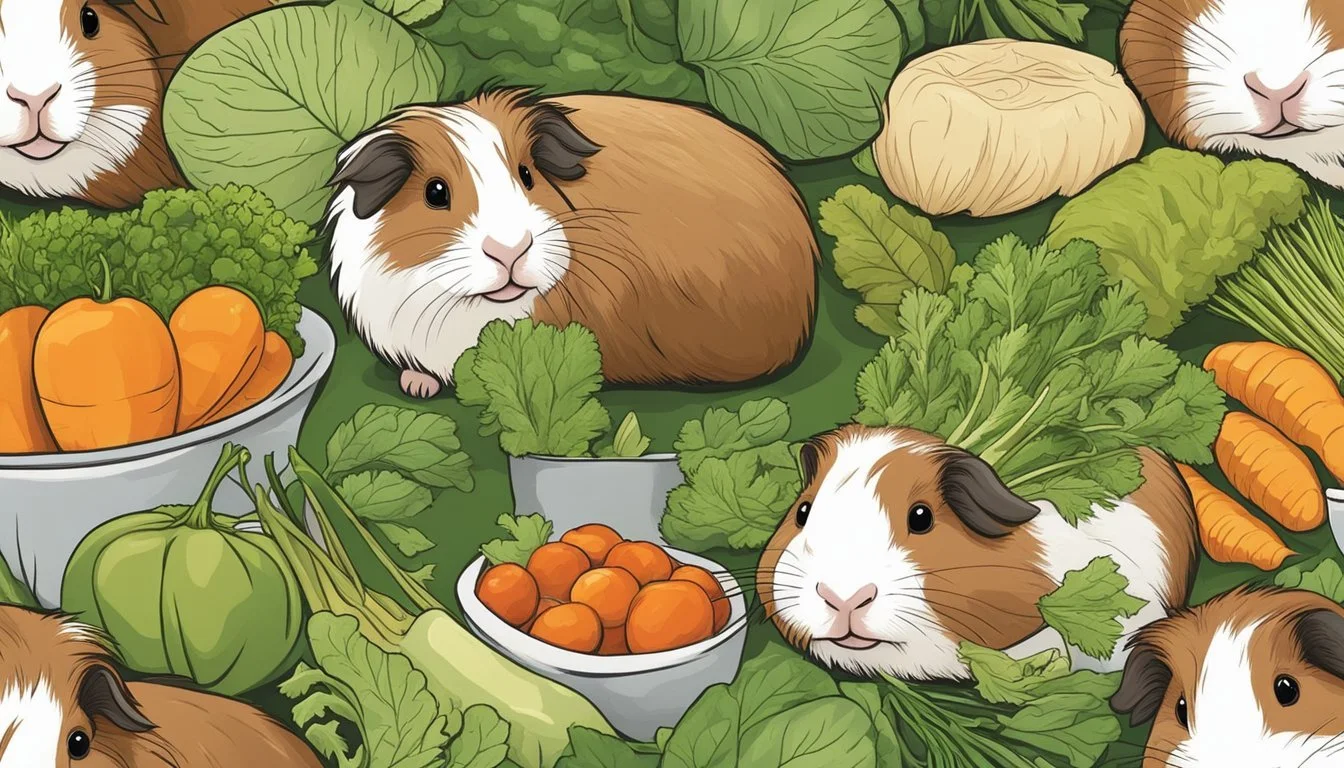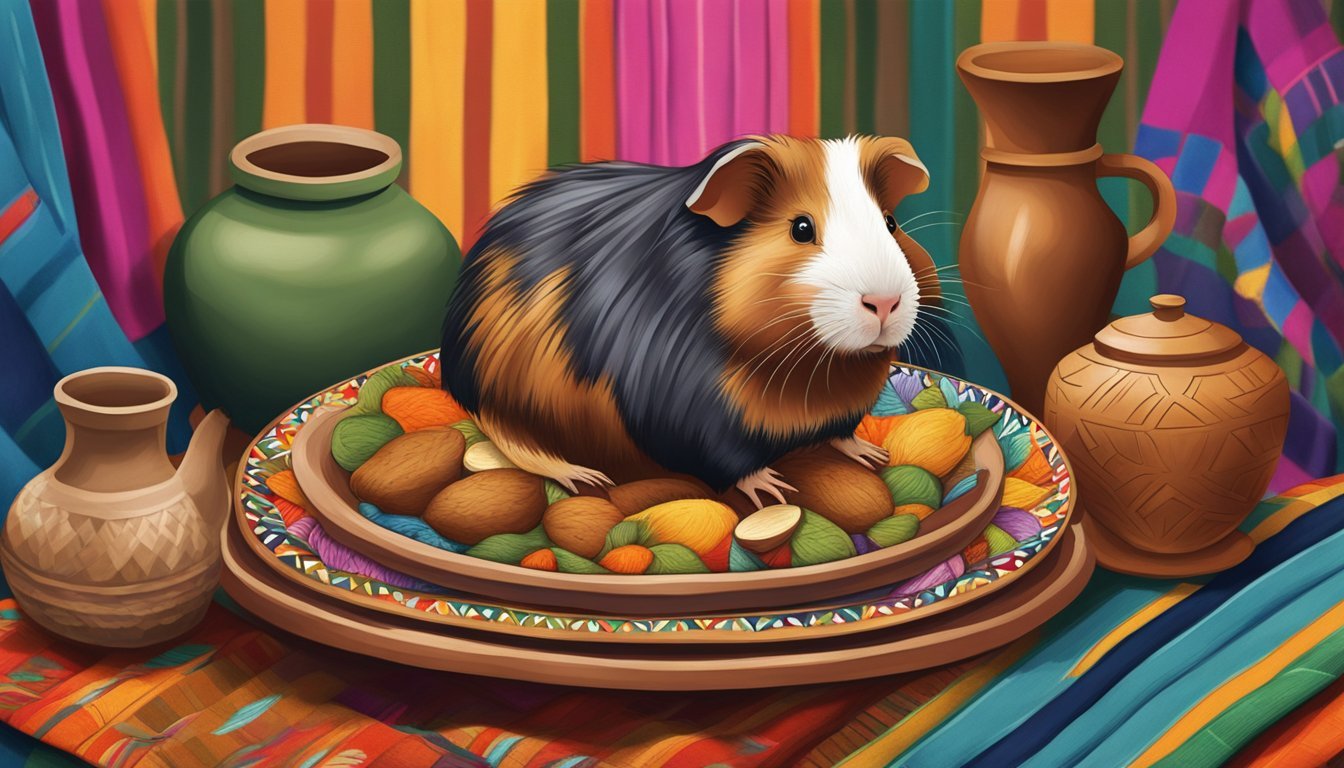Guinea Pig
A Gourmet Exploration of the Andean Delicacy Cuy
In the Andean region of South America, the guinea pig is not only a household pet but also a staple source of protein that has been part of the local diet since pre-Columbian times. Known as 'cuy', a name derived from the sound that the animal makes, this small rodent holds a place of cultural significance and is a traditional dish particularly in Peru. The consumption of cuy is not limited to daily sustenance but also features in various rituals and celebrations, highlighting its importance beyond mere nutrition.
Historically, guinea pig meat was integral to the Andean people, serving as an essential protein in areas where other livestock was less common. Presently, the practice of rearing and consuming cuy continues, with the meat being prepared in a variety of ways that underscore the region's rich culinary traditions. For visitors, cuy might be an adventurous dish to try, while for the locals, it remains a beloved component of their cuisine.
As an example of sustainable farming, guinea pigs require much less space and food than traditional livestock, making them an efficient food source. In addition to its cultural and practical aspects, the rise of cuy as an international delicacy has drawn attention to Andean food culture, inviting global interest in experiencing this unique aspect of the culinary heritage of the region.
Historical Significance
The historical significance of 'cuy' as a valued food source spans back to pre-Columbian times and is intertwined with traditional Andean culture. It has been a staple in the Andean diet, culturally revered and highlighted in regional rituals and artwork.
Cuy in Pre-Colonial Times
In the pre-colonial era, the Andean regions of South America, including territories of modern-day Peru, Ecuador, Bolivia, and Colombia, saw the domestication of cuy. Inca civilization greatly valued these animals for their nutritious meat, which played a crucial part in the pre-colonial diet of the Andean people.
Cuy and Andean Culture
Cuy carried significant cultural and traditional importance in Andean society. These animals were often involved in rituals and ceremonies, reflecting their symbology in Andean spirituality. Moreover, religious paintings and artifacts unearthed from this region frequently depict the cuy, attesting to their cultural presence.
Regional Variations and Traditions
The tradition of consuming cuy varies across the Andes, with each area possessing its own preparation methods and celebratory customs. In Cusco and other parts of Peru, cuy is often reserved for special occasions, while in Ecuador, Bolivia, and Colombia, each country has adapted the tradition to fit its unique cultural narrative.
Culinary Practices
In Peruvian culture, cuy stands as a traditional delicacy, its preparation rooted in time-honored methods and playing a pivotal role during special occasions. The dishes featuring this Andean specialty utilize a variety of herbs, spices, and cooking techniques, transforming simple ingredients into celebrated cuisine.
Traditional Dishes and Preparation Methods
Cuy chactado and cuy al horno are two of the most iconic dishes within Peruvian culinary tradition. Preparing them involves specific steps:
Cuy chactado: This dish typically sees the guinea pig flattened and fried. It is seasoned with a blend of traditional spices before being fried, often in a skillet under a heavy weight to achieve its characteristic flat appearance.
Cuy al horno: Translating to roasted guinea pig, this cooking method involves marinating the cuy in a mix of herbs and spices such as aji panca and garlic before roasting it to achieve a crispy skin.
Modern Interpretations in Peruvian Cuisine
Peruvian chefs have been introducing innovative twists to the preparation of cuy, seeing it emerge in modern Peruvian cuisine. They have experimented with various ingredients and techniques while maintaining the essence of traditional flavors. These modern dishes see cuy paired with contemporary sides and presented in ways that appeal to both locals and tourists intrigued by Peruvian cuisine.
Consumption on Special Occasions
Eating cuy is particularly significant during festivals, national holidays, and celebrations such as Inti Raymi, the festival of the sun. During these events, cuy is more than a meal; it is a part of the ritual and celebration, reflecting its ongoing importance in the culinery practices of Andean culture.
Nutritional, Health, and Dietary Considerations
Guinea pigs, known as 'Cuy' in the Andean regions, serve not only as a traditional food source but also as an important protein provider in local diets. This section dives into the guinea pig's role compared to other protein sources, its benefits within Andean society, and the associated health considerations.
Comparison to Other Protein Sources
Guinea pigs offer a substantial amount of animal protein with a composition beneficial to human health. When compared to chicken, rabbit, and fish, guinea pigs are an excellent source of protein with a lower amount of cholesterol, making them a healthier alternative for those monitoring their cholesterol intake. For instance, a 100-gram serving of guinea pig meat typically contains about 20.3 grams of protein, which is comparable to chicken's protein content but with a notably reduced fat content.
Benefits and Dietary Role in Andean Society
In Andean society, guinea pigs play a critical role as a dietary staple. They are valued for their health properties, with high levels of B-vitamins, linoleic, and linolenic acid. The inclusion of guinea pigs in the diet contributes significantly to food security due to their robust breeding and ease of care. As a result, they have become a trusted source of protein for many populations in the Andean region.
Challenges and Considerations
While guinea pigs provide a nutrient-rich protein source, their cultivation poses certain challenges. Proper handling and farming practices must be observed to ensure the health of both the animals and the consumers. Furthermore, dietary considerations should be taken into account for those with specific health conditions. Though typically low in cholesterol and high in protein, portions and preparation methods can vary the nutritional benefits, so conscious consumption is recommended.
Breeding and Domestication
Guinea pigs, also known as ‘cuy’, are a cornerstone of both tradition and economy in the Andean region. They hold a dual role as a source of income for many Andean farmers and as a culturally significant food item in society.
Domestication and Impact on Local Economy
The Peruvian guinea pig is not just a pet; it is a domesticated animal integral to the Andean way of life. Their domestication, dating back thousands of years, has contributed significantly to the local economy. In rural villages of Peru, cuy serves as a source of income for families. The breeding and sale of these animals bolster economic stability for numerous households. Guinea pigs have a high reproductive rate, which means they can be bred efficiently and sustainably. They require less space and feed compared to larger livestock, making them an ideal animal for small-scale farmers.
Cuy Farming Techniques
Andean farmers employ specific breeding techniques to maintain the health and productivity of their guinea pig stock. The common practices include:
Selection: Choosing the healthiest and strongest individuals for breeding to ensure the vitality of future generations.
Housing: Providing well-ventilated, clean, and spacious areas that protect guinea pigs from the elements and predators.
Nutrition: Ensuring a diet rich in hay, vegetables, and adequate water, which is fundamental for their well-being and growth.
These farming methods are vital to meet both the local and international demand for cuy meat, which is known not just for its cultural significance but also for its nutritional value. Careful breeding and domestication practices contribute to the production of high-quality fur and meat, further sustaining the economic impact this animal has on the Andean regions.
Cultural and Ethical Perspectives
The consumption of guinea pig, known as "cuy," differs greatly across cultures, reflecting a diversity of traditions and ethical perspectives. This section will explore the significance of cuy in Andean traditions and the ethical implications of its dual role as a pet and a source of food.
Cuy in the Context of Andean Traditions
In the Andes, cuyes have a cultural significance that predates recorded history. They are integral to Andean culture and traditions, extending beyond mere sustenance. Cuyería, the practice of breeding and raising guinea pigs, is a longstanding tradition among Andean communities, particularly within the Quechua peoples. These small rodents are not only a nutritious source of protein but also serve in rituals and ceremonies. For example, cuy is used in divination practices and is associated with the healing arts.
Cuy figures prominently during celebrations and feasts, symbolizing communal unity and abundance. Historically, the breeding of cuyes was the purview of the nobility, signifying status and wealth. Today, these practices continue, with cuy remaining a staple at festive occasions and as a cherished component of the Andean diet.
Cuy as Pets and the Ethical Debate
In contrast to the Andean region, in other parts of the world, the guinea pig, or cavy, is primarily kept as a pet. This global discrepancy leads to an ethical debate about the practice of consuming animals commonly regarded as companion animals elsewhere. In North America and Europe, people commonly view guinea pigs as pets, eliciting emotional attachments similar to those with dogs and cats. The idea of consuming what is considered a pet raises questions about animal rights and cultural relativity.
The ethical considerations surrounding the consumption of cuy also hinge on issues of animal welfare, such as the conditions in which they are bred and raised. As demand for this delicacy grows in various regions, including parts of the United States, the discourse around ethical considerations continues to evolve, taking into account cultural practices, economic factors, and the values assigned to different animal species across the globe.
The Global View on Eating Cuy
The global perspective on consuming cuy, a traditional Andean delicacy, is often shaped by cultural differences and an increasing interest in international cuisines. While the practice is customary in South America, it elicits varied reactions abroad.
Perceptions Outside South America
In the West and particularly in North America, guinea pigs are widely regarded as pets rather than a food source. This divergence stems from cultural norms that influence dietary choices and the animals regarded as acceptable for consumption. Consequently, the thought of eating guinea pig can be met with surprise or even disgust among those unfamiliar with its role in Andean culture.
Yet, global cuisine is playing a part in shifting perceptions. Those with a curiosity for different culinary traditions may embark on food tours in South America, where trying cuy can be part of the experience. This direct exposure allows food enthusiasts to understand the context in which cuy is consumed and to appreciate it as an essential element of Andean gastronomy.
Moreover, chefs interested in global cuisine are occasionally incorporating cuy into their menus in cities outside South America, slowly acquainting adventurous diners with this high-protein meat. Cultural differences continue to play a significant role in the acceptance of cuy as a delicacy elsewhere in the world. However, as interest in authentic and sustainable global foods grows, some international diners may become more open to such culinary diversity.






